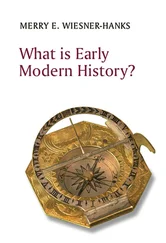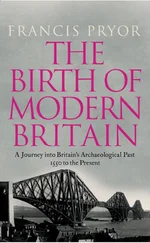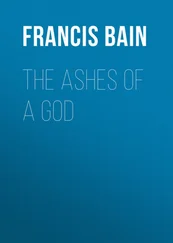R. Nisbet Bain - The Cambridge Modern History
Здесь есть возможность читать онлайн «R. Nisbet Bain - The Cambridge Modern History» — ознакомительный отрывок электронной книги совершенно бесплатно, а после прочтения отрывка купить полную версию. В некоторых случаях можно слушать аудио, скачать через торрент в формате fb2 и присутствует краткое содержание. Жанр: unrecognised, на английском языке. Описание произведения, (предисловие) а так же отзывы посетителей доступны на портале библиотеки ЛибКат.
- Название:The Cambridge Modern History
- Автор:
- Жанр:
- Год:неизвестен
- ISBN:нет данных
- Рейтинг книги:4 / 5. Голосов: 1
-
Избранное:Добавить в избранное
- Отзывы:
-
Ваша оценка:
- 80
- 1
- 2
- 3
- 4
- 5
The Cambridge Modern History: краткое содержание, описание и аннотация
Предлагаем к чтению аннотацию, описание, краткое содержание или предисловие (зависит от того, что написал сам автор книги «The Cambridge Modern History»). Если вы не нашли необходимую информацию о книге — напишите в комментариях, мы постараемся отыскать её.
The first series was planned by Lord Acton and edited by him with Stanley Leathes, Adolphus Ward and George Prothero.
The Cambridge Modern History Collection features all five original volumes:
Volume I: The Renaissance
Volume II: The Reformation, the End of the Middle Ages
Volume III The Wars of Religion
Volume IV: The 30 Years' War
Volume V: The Age of Louis XIV
The Cambridge Modern History — читать онлайн ознакомительный отрывок
Ниже представлен текст книги, разбитый по страницам. Система сохранения места последней прочитанной страницы, позволяет с удобством читать онлайн бесплатно книгу «The Cambridge Modern History», без необходимости каждый раз заново искать на чём Вы остановились. Поставьте закладку, и сможете в любой момент перейти на страницу, на которой закончили чтение.
Интервал:
Закладка:
In the preface to Hilary is a passage which sums up the position of Erasmus towards the ancient and the scholastic learning far better than we could do it for ourselves. “We have no right to despise the discoveries or improvements which have originated in the minds of our contemporaries; yet it is an unscrupulous intellect that does not pay to antiquity its due reverence, and an ungrateful one that rejects those to whose industry the Christian world owes so much. What would sacred learning be without the labours of Origen, Tertullian, Chrysostom, Jerome, Hilary, and Augustine? I do not hold that even the works of Thomas (Aquinas) or Scotus should be entirely set aside. They wrote for their age, and delivered to us much that they drew from the writings of the ancients and expounded most acutely. On the other hand, I cannot approve the churlishness of those who set so much store by authors of this class, that they think it necessary to protest against the providential revival of good literature all over the world. There are many kinds of genius: each age has its different gifts. Let every man contribute what he can, and let none envy another who does his best to make some useful addition to the common stock of knowledge.”
“To the ancients reverence is due, and in particular to those who are commended by holiness of life as well as by learning and eloquence; yet they are to be read with discretion. The moderns have a right to fair play. Read them without prejudice, but not without discrimination. In any case let us avoid heated contention, the bane of peace and concord.”
Such was the spirit in which Erasmus strove to work: and some words of his good friend and fellow-worker, Beatus Rhenanus, tell us something of the effect of his work on his own age. “He was sufficiently outspoken on the subject of sacred learning: for, to use his own words in a letter to a friend, he saw that more than enough was made of scholastic theology, and that the ancient learning was quite set at nought. Theologians were so much occupied with the subtleties of Scotus that the fountain-head of Divine wisdom was never reached by them....We begin, God be thanked, to see the fruit of these warnings. Instead of Hales and Holcot, the pages of Cyprian, Augustine, Ambrose, and Jerome are studied by our divines in their due season.”
Only the briefest allusion has so far been made to the development of one great department of Christian learning-ecclesiastical history. The men of the thirteenth and fourteenth centuries had in their hands not a few of the authorities which we account as of capital importance. They had the History of Eusebius in a Latin version: they had the Tripartite History, embodying Socrates, Sozomen, and Evagrius: they had Baeda, Gregory of Tours, and the Speculum HiMoriale of Vincent; and they had innumerable biographies of Saints. In spite of this, it will not be contended that a true and discriminating view of Church history, based on the best sources, was a possession of the Middle Ages. It is clear that highly incorrect views were current as to the development of doctrine, ecclesiastical jurisdiction, and liturgical usage. This could not fail to be the case when such documents as the False Decretals and the Donation of Constantine passed as genuine. And, on the other hand, when their spuriousness became an accepted fact, a reaction was inevitable. We have seen that the first attacks on them did not come from men who had broken with the Roman Church. It was Lorenzo Valla who exposed the Donation of Constantine; and Roman Catholics did not scruple to impugn the Decretals. Cusanus rejects the Epistles of Clement and Anacletus: Erasmus points out (in a Preface to Athanasius) the way in which a letter of Anteros was made up. Naturally, however, the attitude of the “Evangelical” critics towards the credentials of the Latin Church was a far more radical one. Everything, in their eyes, was corrupt. A return to primitive simplicity was essential: and the width of the chasm which separated the Roman usages of their day from those of the Apostolic age could easily be demonstrated by a categorical setting forth of the history and development of those usages from the beginning. With such an object the great compilation of the “Magdeburg Centuriators” was begun; and it has some claim to be looked upon as the first Church History compiled on critical principles. It was of course a Tendenzschrift; nothing else was possible; nevertheless, it brought together and laid before the world for the first time an enormous amount of information either dispersed or unknown before. A committee, whose composition varied from time to time, was responsible for the work. The period dealt with was divided into centuries, and the events, literature, doctrine, and other characteristics of each century were separately treated according to a regular plan. The twelfth century was the last that was reached. The moving spirit of the committee was Matthias Flacius Illyricus, who had already made himself a name as a controversialist on the Protestant side. His Clavis Sacrae Scripturae sums up the exegetical knowledge of his day. His book on the testimony of earlier ages against the papacy (Catalogus Testium Veritatls) gives proof of an enormous range of reading; and among our smaller debts to him may be reckoned the fact that he collected and printed as a supplement to that work a large mass of medieval Latin poetry, largely from a manuscript of English origin.
Whatever the merits or demerits of the Magdeburg History may have been, it speedily became a famous and influential book: so famous and so influential, indeed, that those whose position it attacked were compelled to issue a counterblast. A worthy champion was found in Cesare Baronio, Cardinal of the title of SS. Nereus and Achilleus. The twelve volumes of his Annexes Ecclesiastici, published between 1588 and 1607, cover the same period as the work of the Centuriators. The stores of the Vatican, of which after 1596 he was librarian, furnished an unrivalled stock of material, and his own previous studies, of which some fruit had already been seen in his edition of the Roman Martyrology, enabled him to use this material to advantage. That Baronius, like the Centuriators, was a partisan needs hardly to be said; his accuracy and critical instinct, moreover, leave much to be desired. Still, his erudition was enormous, his services to learning great, and his love of antiquity genuine and fervent. An eloquent witness of this love is the appeal to posterity inscribed in the Cardinal’s own titular church, whose ancient arrangements he had himself restored,preserving with a reverence uncommon in his day all that he could find of its original furniture.
A brief parenthesis may be allowed at this point on the application of the science of archaeology to things Christian. For more than a century had the remains of classical art and architecture been studied and treasured before it occurred to scholars that the Church possessed antiquities which merited consideration. Probably the first book entirely devoted to the consideration of Christian monuments was that of Onofrio Panvinio on the older Roman basilicas, published in 1554. Rome was thus the parent of Christian as of classical archaeology. In 1578 the reopening of the Catacombs began, and the discoveries of ancient paintings and inscriptions excited a keen interest, though it was not until 1632 that the first great work on “Roma sotterranea”-that of Bosio-saw the light. The study was carried on and developed during the seventeenth century chiefly by Italians: it is probably fair to say that no work of real importance in this department was done outside Italy before 1700.
To return to the wider field of Church history. In this, the Centuriators and Baronius may be regarded as pioneers. Theirs were, of course, not the only works of the kind that appeared, but they deserve special prominence in view of their large design and the extent of the new ground they broke.
Читать дальшеИнтервал:
Закладка:
Похожие книги на «The Cambridge Modern History»
Представляем Вашему вниманию похожие книги на «The Cambridge Modern History» списком для выбора. Мы отобрали схожую по названию и смыслу литературу в надежде предоставить читателям больше вариантов отыскать новые, интересные, ещё непрочитанные произведения.
Обсуждение, отзывы о книге «The Cambridge Modern History» и просто собственные мнения читателей. Оставьте ваши комментарии, напишите, что Вы думаете о произведении, его смысле или главных героях. Укажите что конкретно понравилось, а что нет, и почему Вы так считаете.












